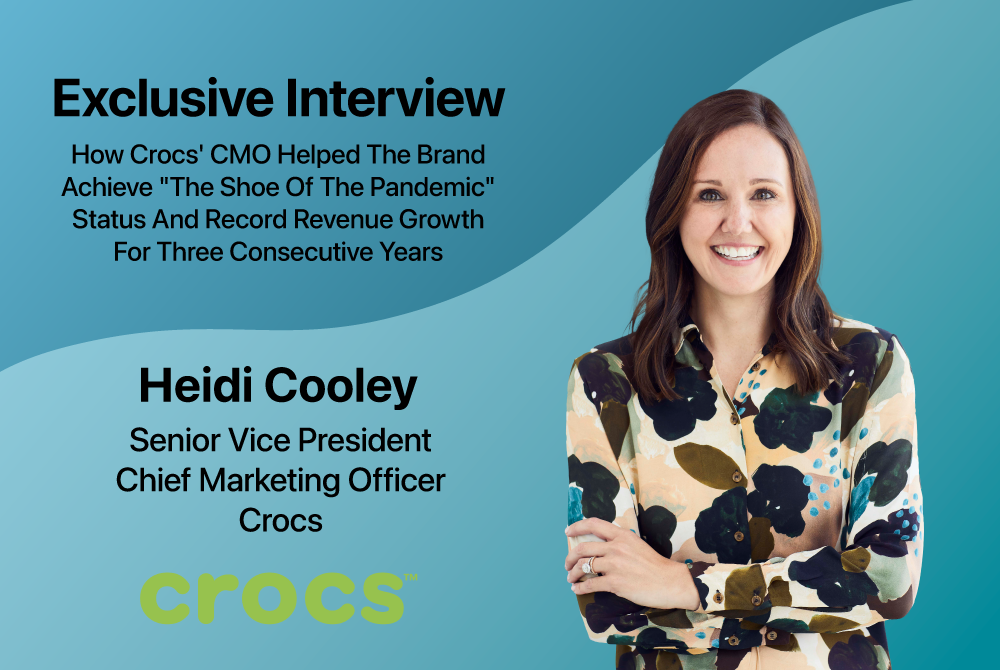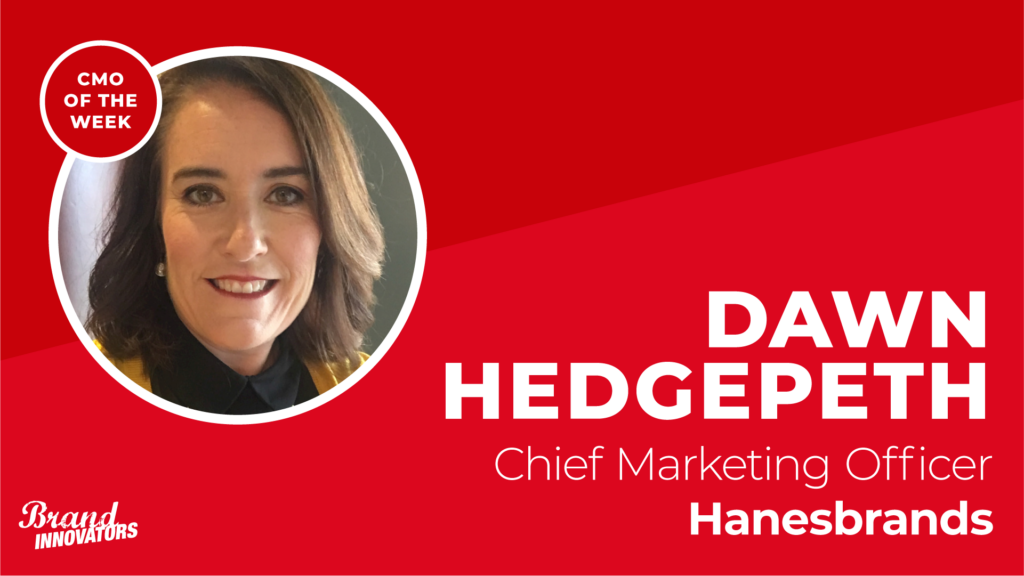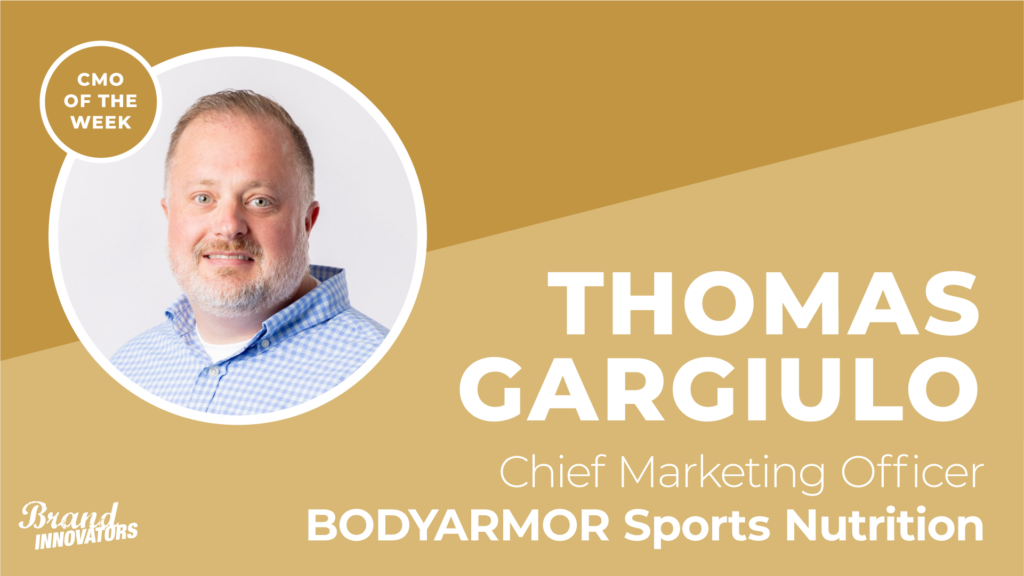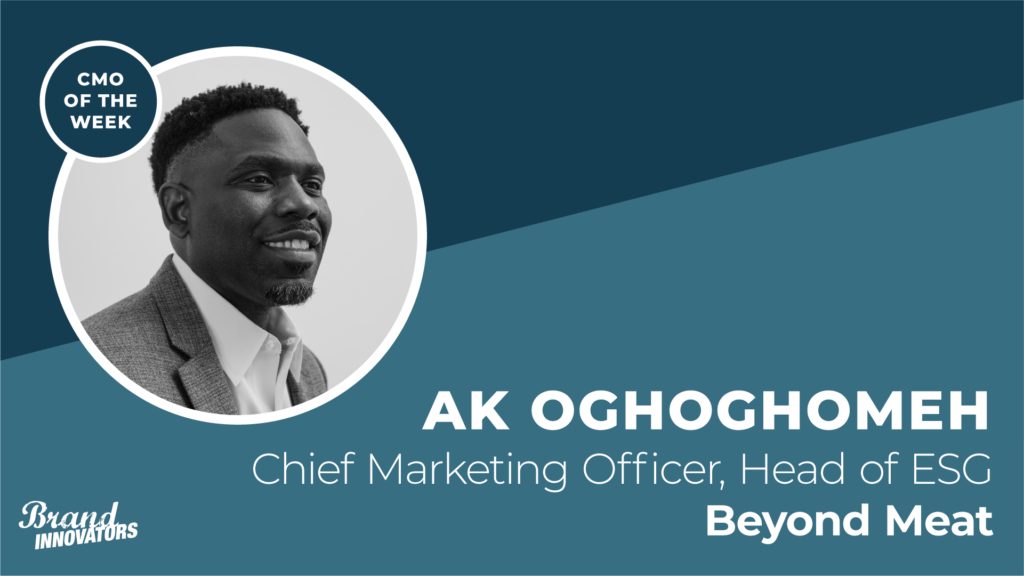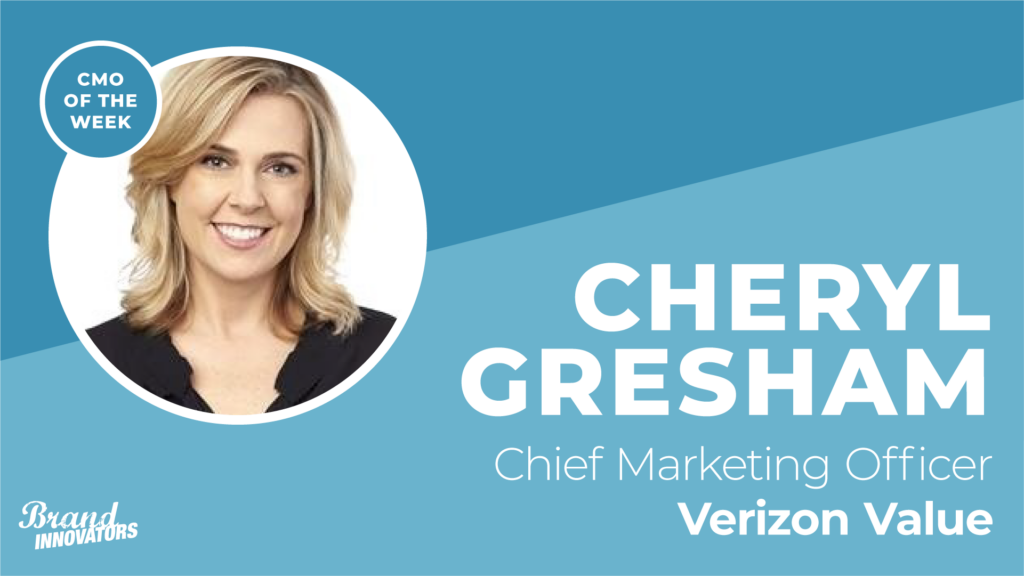Heidi Cooley knows how you may feel about her brand, and she welcomes the debate.
As a five-and-half year marketing veteran at Crocs, where she was elevated to Senior Vice President – Chief Marketing Officer last March, Cooley is keenly aware of the “love it or hate it” response Crocs shoes have elicited since their debut in 2002. The porous, foam clog may not be the most practical shoe for a formal office setting, but as the Zoom-if-ication of the workplace became the norm during the past two years of the pandemic, a record number of consumers began to seek it out as their go-to for work-from-home footwear.
“We made the decision to lean into that polarization,” Cooley says of the brand’s online discourse. “We love that tension and we often create things to spark that debate. A lot of things we put into the market, you get about half the fans saying ‘Oh my God, I would never wear KFC Crocs,’ to half the fans saying ‘Oh my gosh, dream come true.’ What that polarization has allowed us to do as a marketing organization is to really be bold and creative and innovative. It’s amazing what our fans allow Crocs to do. I think that’s because of the polarization of the brand and the polarization of the shoe. We’re really confident in who we are and our fans resonate with that approach really well.”
And even before the pandemic, that confidence in the product and its boldly unique look was starting to translate in Crocs’ sales. In 2019, Crocs reported full-year revenues of $1.2 billion (up 13.1% year-over-year), fueled by a then-record fourth quarter. Two years later, the company is expecting its annual revenue to nearly double from 2019 levels to a projected $2.31 billion in 2021, up 67% from 2020 and accelerating at faster rates than it previously anticipated.
In a Jan. 10 statement, Crocs CEO Andrew Rees said he expects Crocs to achieve $5 billion in revenues by 2026, even before factoring in sales from the company’s December 2021 acquisition of casual footwear brand HEYDUDE for $2.5 billion. “Building upon that strong foundation, upon closing, we are excited to add HEYDUDE as another high growth, highly profitable brand,” Rees added.
With such positive headwinds in Crocs’ favor heading into 2022, Cooley is looking forward to having fun with some experiments that could expand the Crocs brand into emerging digital arenas. “Our brand meets our fans where they’re spending their time, so yes the metaverse is on our horizon,” Cooley says. “We have an NFT project coming soon, and you’ll see more coming out from our brand in the future. We have a really innovative digital and social team who often recognize trends early, but we also are grounded in this very authentic approach to our marketing strategy. We don’t always jump into something to be the first, we jump in to be relevant. And that continues to guide how we’re approaching the metaverse.”
Brand Innovators caught up with Cooley from her home office in Denver to learn more about how Crocs’ demand has evolved and ramped up throughout the different phases of the pandemic, how cutting out traditional media from her marketing mix five years ago has paid off and why ramping up the brand’s inclusivity and sustainability commitments will help cement Crocs’ “comfortable in your own shoes” ethos. The conversation has been edited for length and clarity.
Brand Innovators: Crocs just announced its third consecutive year of strong sales growth for its products. How did the pandemic impact adjust how you met that demand, and how did you pivot your messaging to address the new market conditions?
Heidi Cooley: I think what I have to start with is we did see incredible demand for our product prior to the pandemic. In 2019, we had record-breaking financial performance. And then again in 2020, and then obviously most recently in 2021. And we believe that that performance was driven by a brand strategy that was focused on two things. First, this intent to reinvigorate or reignite our icon. And secondly, this approach that we have in marketing that’s really grounded in what we call our consumer-centric approach. And it’s that approach that we believed helped us come out on the forefront of the pandemic. Because like many of the great brands, the pandemic challenged us in ways we could have never anticipated. But for Crocs, it gave us a lot of confidence that our strategy works.
Our strategy is to do what we believe we do best, which is to listen to our fans and then respond quickly. And I think one of the most pivotal moments for our brand was actually back in March of 2020. When the entire country went into lockdown, we initiated our largest consumer response campaign ever. It started with a DM from a nurse who was looking for the comfort and functional benefits of our shoes. And it turned into what we called our Free Pair For Healthcare, which was this commitment to give away tens of thousands of pairs of shoes a day to healthcare heroes. Over 45 days, we gave away 860,000 pairs. But I think what it taught us most importantly, is that doing good is good for Crocs. And that listening to our fans and responding quickly is our competitive advantage.
We were freezing marketing spend like other brands teams. We were trying to figure out what was happening to us as individuals and as companies. But we, as an organization, made the decision to quickly respond to our fans. And I think that was a pivotal, transformational moment in our history, especially as it relates to the way we go to market. So again, if anything, it’s this consumer-centric, responsive marketing strategy that we’ve been running now for over five years that we just continue to have more and more confidence in each and every single day.
Two years into the pandemic, what role do you see Crocs products playing in how we express ourselves now?
I think Crocs fits in really nicely with the behavioral shift. We saw casualization of the markets coming over time. White sneakers have been trendy for a while, but the pandemic really accelerated the consumer’s desire for comfort. And Crocs was well positioned to capitalize on that behavioral shift. One, because we make an incredibly comfortable product. Two, because our brand is grounded in being comfortable in your own shoes. This notion and our invitation to “come as you are” is still the positioning that we bring to market today — really rooted in self expression, versatility, optimism.
We’re a brand that can be fun and bold and colorful. We were coined “the shoe of the pandemic” and we got a lot of partners reaching out and being like, “Is that a compliment?” We believe absolutely so. We’re proud to be a brand that showed up and provided this sense of comfort in a really uncomfortable time. And we do believe that that created incredible equity with our fans, that we will continue to show up in the ways in which they want to express themselves.
How has that role of comfort manifested itself in your brand voice these past two years?
Our manifestation is to come as you are. That’s been a global invitation we’ve put out in the market for over five years now. But the tone changes because we’re a brand that listens to the conversations of our fans. We spend a lot of time on social media, mining the tone and conversations of our fans.
We know when our fans want us to get involved in conversations, they like us to jump in on things that are fun and funny. They like us to bring creative and innovative collaborations to market, give them a reason to kind of laugh and have fun. A lot of brands took maybe a more serious approach throughout the pandemic. You see a lot of ads that are talking about all the pressures we as individuals are facing. And it’s not that we at Crocs ignore those things, but we think we can be an optimistic part of their everyday life. We know that it takes a sense of confidence and a sense of self-expression to put on a pair of our iconic clogs, and we like to be that notion of fun and versatility.
How has that impacted where you invest digitally?
We have a digitally-led, social first approach. We spend a lot of our time and energy and effort in social media, so we like to create new and innovative and disruptive experiences for our fans. Whether that’s on TikTok or the fact that we now have Crocs for fans as Bitmoji avatars, to this incredible lineup of how we drop collaborations on platforms such as Twitch. We like to bring innovative solutions to our marketing campaigns that create what we hope consumers feel is more of a one-to-one engagement. We’re incredibly lucky that our fans have coined themselves “Croc Nation.” And so we feel like it is our obligation to give them really interesting reasons to engage and come back to our brand.
Your role is global in nature. How do you create campaigns that are globally scalable but locally relevant?
One of the things that makes us unique is how we define our key consumers, because we intentionally have a broad consumer base. We believe that we are a democratic with a small D brand. There are five-year-olds that rock their Crocs and there are 70-year-olds that rock their Crocs. And people love them because they’re from Post Malone, or people love them because they hike in them or garden in them. And I think what we really want to do from a consumer relevance perspective is to give fans all over the world more reasons to try the Crocs. Our role is to persuade people to try the brand, and that requires this healthy balance of global strategy that is executed in a really locally relevant way.
What role have celebrity collabs and other brand partnerships played in your record growth this past year?
We recognized early on the importance of partnering with ambassadors and influencers to transform the perception of this brand. Our biggest challenge was making our iconic clog relevant and showing consumers how they could wear Crocs. And we have had incredible celebrity partners and ambassadors. We have a really innovative influencer strategy as well. And that organic approach to showing fans how to wear Crocs has proven really beneficial in our transformation, for sure. Although collaborations are definitely not the only strategic priority that’s helped with the resurgence, they have been a critical component of inviting new fans to the brand.
What’s been the other main contributor to Crocs’ resurgence, would you say?
I would say it is our digitally-led social first approach. We made the decision five years ago to no longer participate in traditional media. And we also at that time recognized that connection with consumers on social media was going to be at the forefront of our strategy. That was somewhat innovative in the space five years ago, and I think that’s the same strategy that’s giving us confidence again to participate in the metaverse and in other new innovative experiences as well.
What are your organization’s latest commitments to DE&I and sustainability, and how are those manifesting in your role as a marketer?
Our vision is that everyone should be comfortable in their own shoes. And that’s inspired a lot of work around DE&I as well as sustainability. We just last year introduced our brand purpose, which is a commitment to create a more comfortable world, and that’s inclusive of three pillars. One is comfort for our community. One is comfort for all or our inclusivity initiatives. And the third is comfort without carbon, which is our sustainability commitment.
So as it relates to sustainability, if I work backwards, we committed to becoming net zero by 2030. And we have four strategic pillars that are guiding that sustainability strategy: Sustainable ingredients, packaging, afterlife and resource use. And what I think is really most exciting for us as a brand is our differentiated approach to sustainable ingredients. And throughout this work, we realized that Crocs actually has one of the lowest carbon footprints in the industry today, primarily because we’re a molded shoe. There isn’t a lot of cut and sew, there’s not a lot of waste, they’re light and more affordable to the ship, as an example.
But we knew that we wanted to start with our iconic product as it related to sustainable ingredients, whereas a lot of other brands start with some sort of dimensionalization franchise or category. We wanted to start with our core. We have an incredibly talented innovation team who basically identified this opportunity to create a bio based croslite, which is the material that we make our classic clogs out of. And so starting this year, actually in Q1 of this year, we are really excited to share that at Crocs we believe that green should come in every color.
With diversity and inclusion, we also spend a lot of time and effort giving shoes and funds in times of need, both in our local communities and around the world. We are working really hard to be a more inclusive employer and to really, again, live the ethos of our brand manifestation. If we tell the world they get to come as they are, we have to live that in-house, in with our fans, and that does guide us today.
What’s your current agency structure, and are you relying more on in-house teams to make fast, nimble decisions?
We use agencies sometimes to augment strategic planning. We definitely use agencies to help us create content at times, and we use them to help us on key program activations. I do believe that having in-house team members to be able to respond quickly, especially on the social media side, has enabled our success. And we’re scaling that globally.
What’s driven our transformation is this one-to-one connection with consumers. We have fans that ask us to send white Classics to their graduating class, and we send them white Classics. We have fans that start Change.Org petitions to create Lightning McQueen Crocs. And you know what we do? We create Lightning McQueen Crocs. And we do it fast. My team is incredibly agile and incredibly innovative. And that is definitely what I will take with me for the rest of my life. Hire a group of talented people and let them respond quickly.
What new product or campaign launches are you excited about in 2022?
Crocs is bringing a lot of innovation to our fans this year from a product perspective, which is always exciting. We have our best collaboration lineup yet, which I can say confidently. I know we all are talking about it a lot as a marketing industry, but I’m excited for Crocs to explore the metaverse because we will do things that are disruptive and innovative and really authentic to our fans. It’s also our 20th anniversary this year, which we are looking forward to celebrating with our Croc Nation.
Andrew Hampp is an entertainment marketing consultant for Brand Innovators and the founder of consultancy 1803 LLC, based in Berkeley, California.
